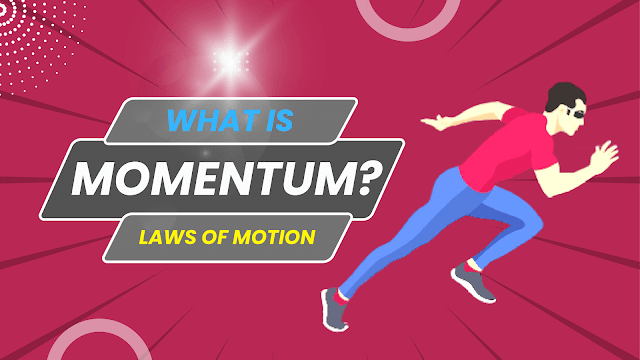What is Momentum?
All objects have mass and if it is in motion it also has a velocity. The combination of this mass and velocity gives the object a dynamic property called momentum.
The momentum of an object is equal to the product of its mass and velocity i.e if the mass of an object is m and its velocity is v then its momentum is mv.
Let's understand the concept of momentum with an example. Suppose two similar trucks one loaded and the other empty are moving at the same speed. In this case due to the mass of the loaded truck its momentum is relatively high.
Now if two trucks have to be stopped at the same time more force must be applied to the loaded truck than the empty one.
Consider again that the two trucks have the same mass but different velocities. In this case the higher the speed of the truck the higher its momentum.
Now if we want to stop the truck at the same time more force must be applied to the faster truck than the slower one.
So we see that the amount of force required to stop an object in a given amount of time depends not only on its initial velocity but also on the combination of its mass and velocity i.e its momentum.
It is noticeable that the momentum of an object depends on both its mass and velocity.
Mass is a scalar quantity but velocity is a vector quantity, so momentum is also a vector quantity. It has both magnitude and direction. In the case of momentum, the direction of velocity is considered the direction of momentum.
Unit of momentum
If we talk about the unit of momentum then
The unit of momentum = The unit of mass × The unit of velocity
We know in the SI unit system the unit of mass is kg, and the unit of velocity is m/s. So the SI unit of momentum is kg.m/s. Similarly, we can write, the CGS unit of momentum, as g.cm/s.
Dimension of momentum
If we talk about the dimension of momentum then
The dimension of momentum = The dimension of mass × the dimension of velocity
We know, the dimension of mass is M and the dimension of velocity is LT⁻¹. So the dimension of momentum is MLT⁻¹.
Law of Conservation of Linear Momentum
According to the law of conservation of linear momentum when two objects collide in an isolated system the total momentum before and after the collision remains equal.
Consider two balls of mass m₁ and m₂. Where the ball of mass of m₁ has a velocity of u₁ and the ball of mass of m₂ has a velocity of u₂.
Suppose they collide while moving in the same direction for which the ball of mass m₁ gains a velocity of v₁ and the ball of mass m₂ gains a velocity of v₂.
Before collision, the total momentum of these two balls is m₁u₁ + m₂u₂. And after collision, the total momentum of these two balls is m₁v₁ + m₂v₂.
If there is no external force acting on the ball i.e only interaction takes place then according to the law of conservation of linear momentum m₁u₁ + m₂u₂ = m₁v₁ + m₂v₂.



Post a Comment (0)